Recently, I made some steamed pork spare ribs with black bean garlic sauce. This childhood favorite was very tasty, but I learned that cutting the ribs into bite-sized pieces had to be done before steaming and not afterwards!
Below are some links to more details, including photos:
My Story
Because steamed spare ribs with black bean sauce has always been a favorite dish of mine, I was happy to see a recipe for it on a website where I learned how to roast chicken without and with a roasting rack.
Inspiring Recipe
The recipe that I referenced for this main course was Steamed Spare Ribs with Black Bean Sauce from Pups with Chopsticks, a food blog.
First Try
Buying spare ribs was all I had to do before making this dish.
Ingredients to Use
With 2.11 pounds of ribs, I increased the measurement for the remaining ingredients as follows:
Marinade
- 2/3 teaspoon of dark soy sauce
- 1 1/3 teaspoons of sugar
- 2/3 teaspoon of sesame oil
- 2 tablespoons + 1/3 teaspoon of black bean garlic sauce
- 1 tablespoon + 1 1/4 teaspoons of water
- 2 tablespoons + 1/3 teaspoon of soy sauce
- 4 cloves of garlic
- 1 tablespoon + 1 1/4 teaspoons of corn starch
- 1 tablespoon + 1 1/4 teaspoons of oil
Garnish
- 1 1/3 stalk of green onions
For the marinade, I substituted brown sugar for maple syrup/regular sugar and black bean garlic sauce for fermented black beans, since those were the items I had.
As for the garnish, I skipped the optional items because I couldn’t find any bird’s eye chili at the supermarket and didn’t want to get any sesame seeds, since I hardly have a need for them.
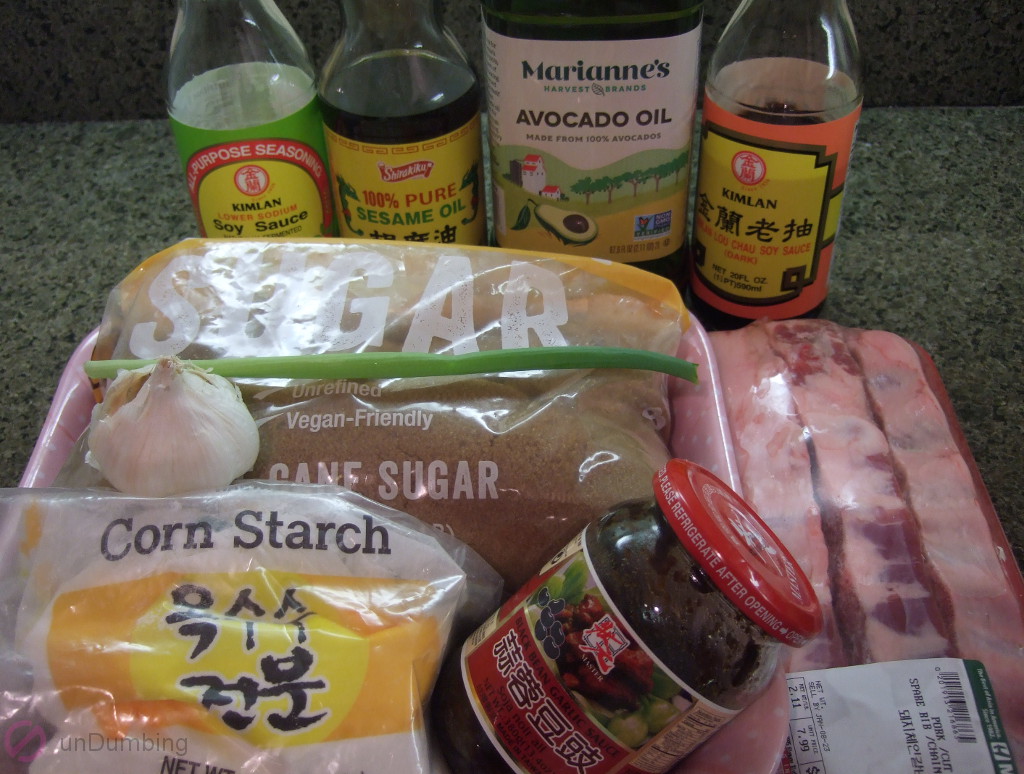
Steps to Prepare
For the instructions, I made some changes when marinating and steaming the ribs, as follows:
Marinating the Spare Ribs
Step 1 – Trying to save some time from cutting the ribs and washing the related tools, I skipped this step, so that I could experiment with using scissors instead.
Steps 2 and 3 – Since I was planning to use the black bean sauce from a jar, I didn’t have to do these two steps.
Step 7 – Once the ribs were on a plate, I snipped the meat in between the bones as much as I could.
Also for Step 6, there was no need to add water since there was enough marinade to create the slurry.
Steaming the Pork
Step 5 – When I checked the ribs for doneness after steaming them for 10 minutes, they were not cooked enough, so I continued to add more time, i.e., 5 minutes, then another 5, 3, and 2 more minutes, while continuing to cut them into individual pieces along the way.
Step 6 – For the garnish, I added it before I took the plate out of the steamer, so I could warm up the chopped green onion.
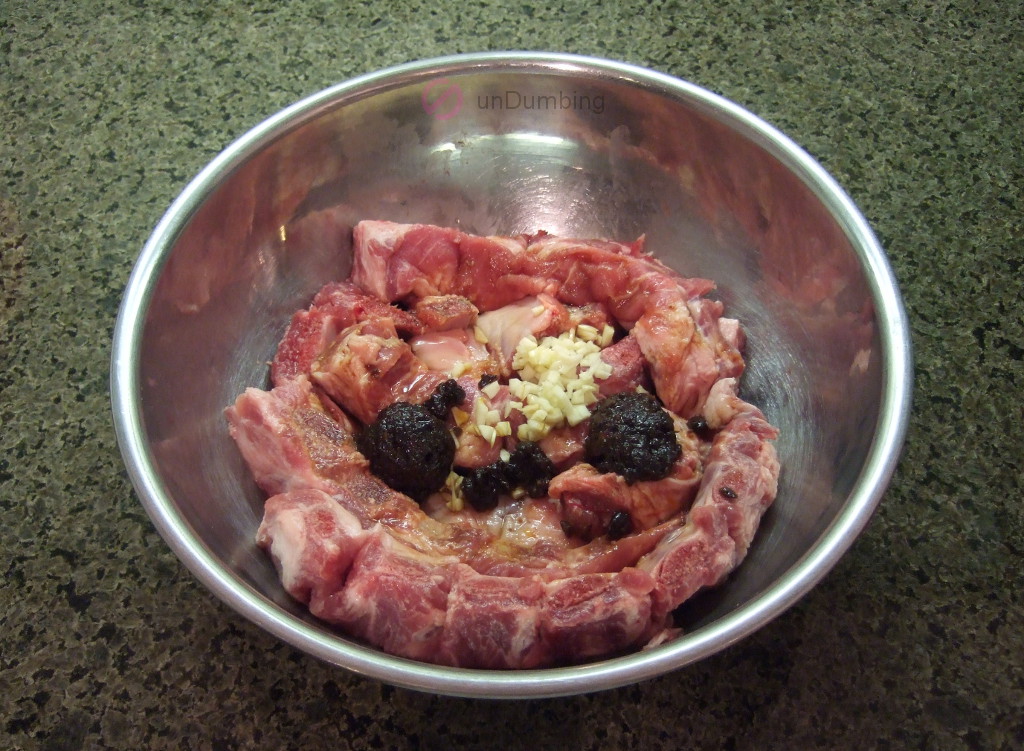
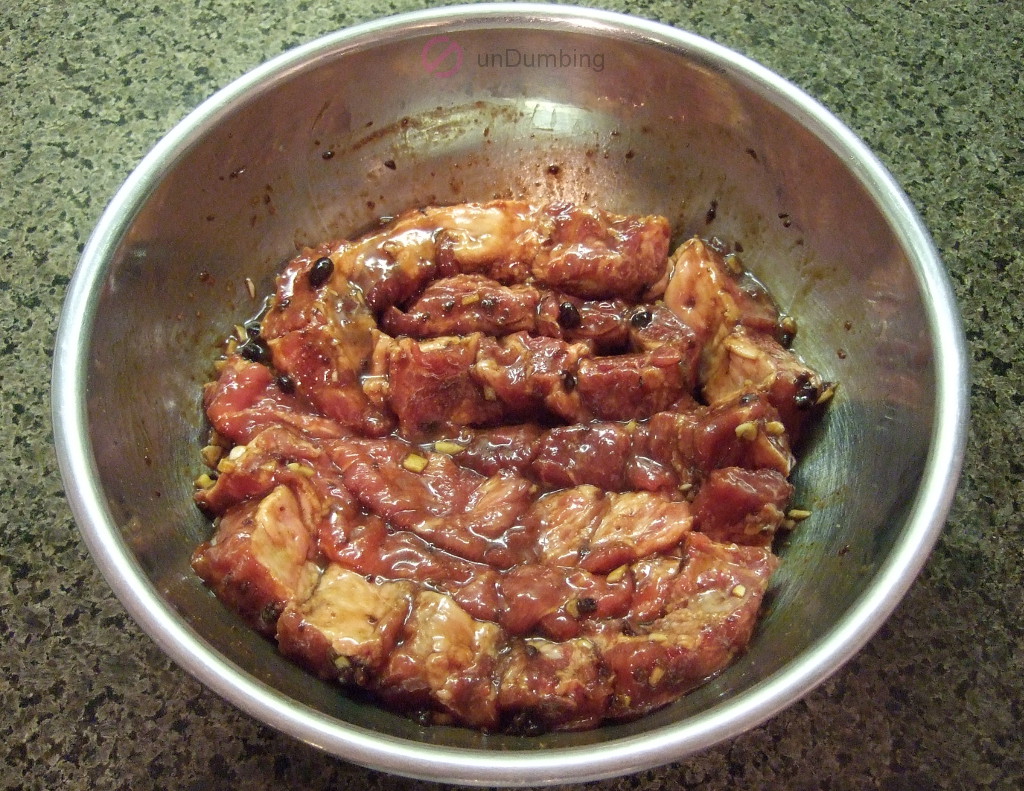
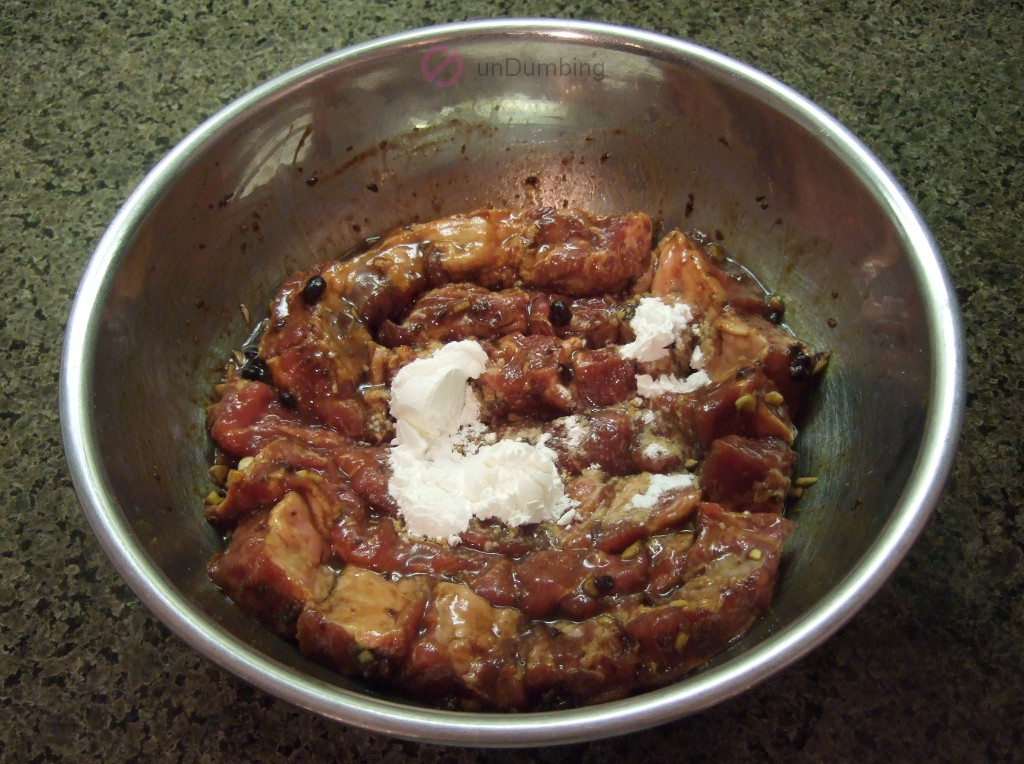
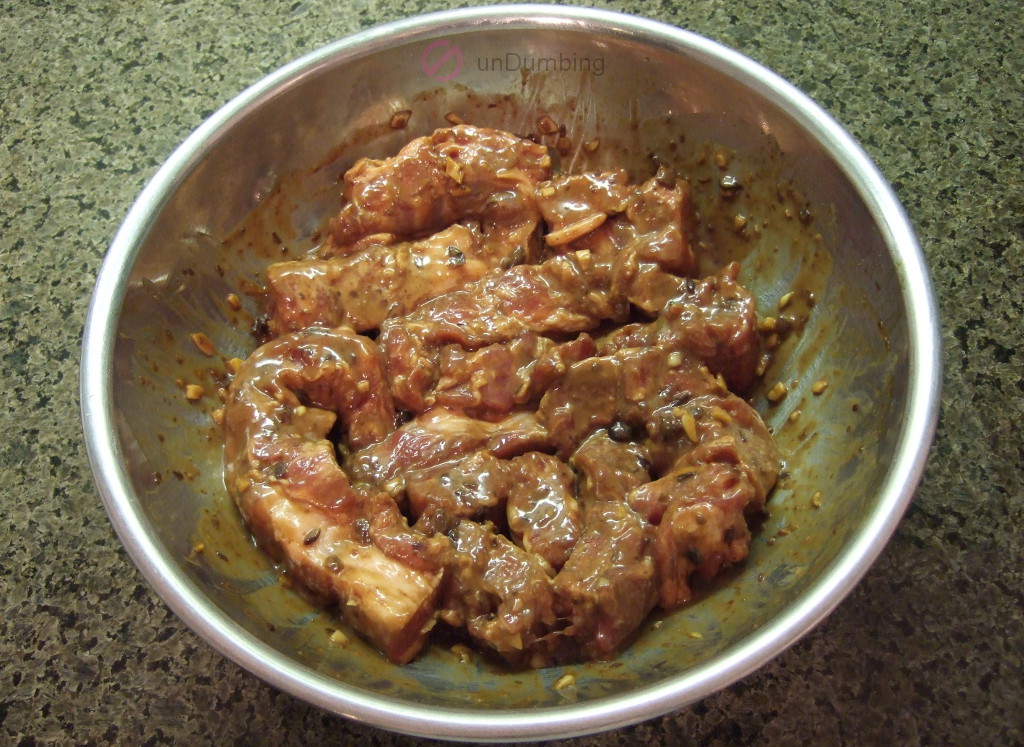
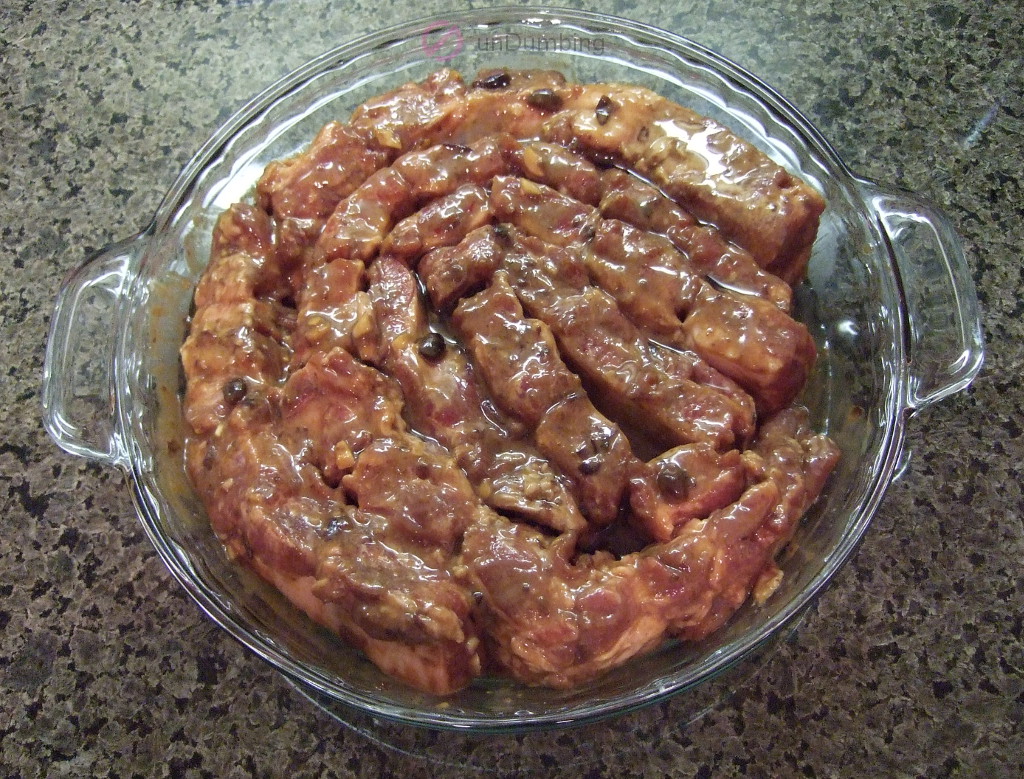
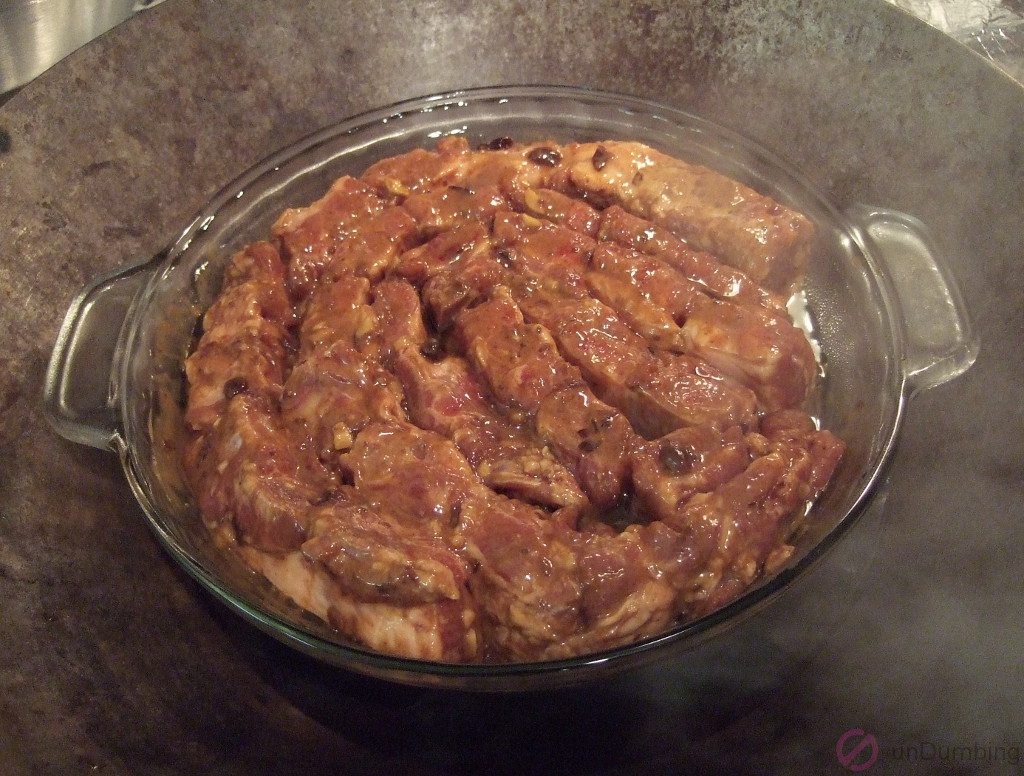
Time to Eat
The spare ribs were finally done and I was ready to try them out.
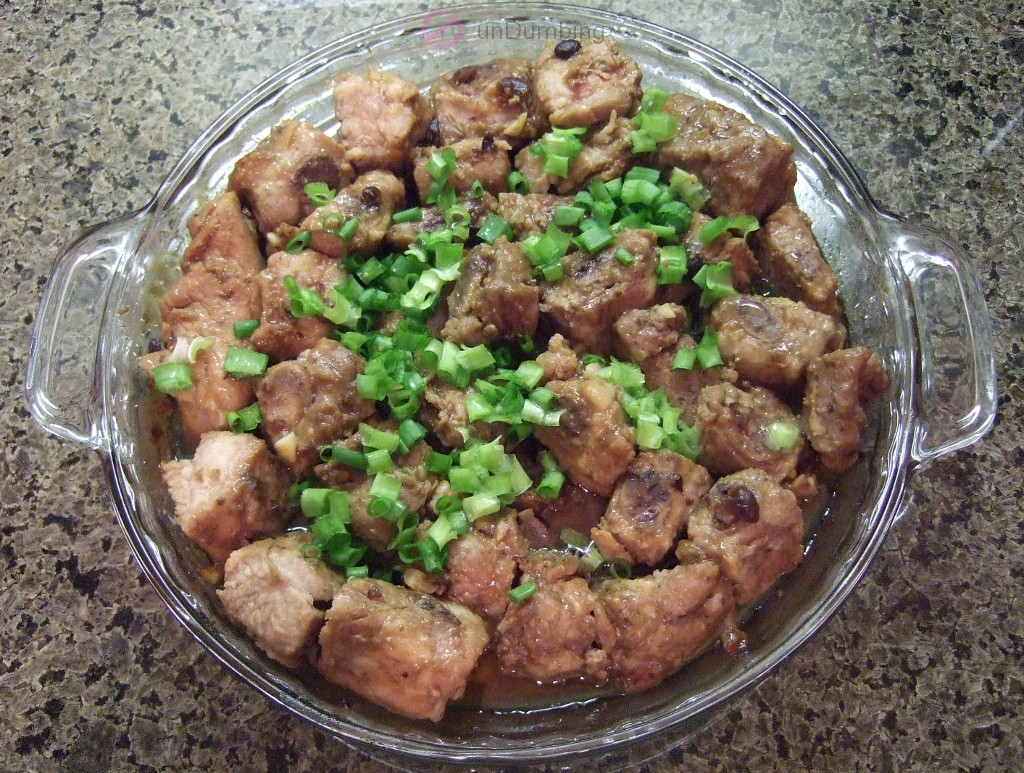
Recipe Rating
Below were the results of the recipe after the first try:
| # of Ingredients | Effort | $ / Serving | Try Again? |
|---|---|---|---|
| 11 * |

Though the steamed ribs tasted good, I had to microwave the plate for another 2 minutes because the pork was still a little pink inside.
Second Try
There was no other goal for the second batch except to cook it thoroughly.
Ingredients to Use
This time, I used 2.485 pounds of ribs along with the same ingredients from the first batch, as shown below:
Marinade
- 3/4 teaspoon of dark soy sauce
- 1 2/3 teaspoons of sugar
- 3/4 teaspoon of sesame oil
- 2 1/2 tablespoons of black bean garlic sauce
- 1 1/2 tablespoons + 1/2 teaspoon of water
- 2 1/2 tablespoons of soy sauce
- 5 cloves of garlic
- 1 1/2 tablespoons + 1/2 teaspoon of corn starch
- 1 1/2 tablespoons + 1/2 teaspoon of oil
Garnish
- 2 stalks of green onions
Steps to Prepare
As compared to the first try, below is what I adjusted:
Marinating the Spare Ribs
Step 1 – I added back this step from the original recipe and cut the ribs into bite-sized pieces.
Steaming the Pork
Step 5 – This time, I started steaming the ribs for about 20 minutes and added time until the thermometer reached about 160 degrees Fahrenheit. Though I forgot to track the total cooking time, I think it was about 25 minutes. (The target temperature was a guess based on what I’ve seen in recipes for beef and chicken, but according to the guidelines from the Pork Checkoff and The National Pork Board, 160 degrees Fahrenheit is a safe internal temperature.)
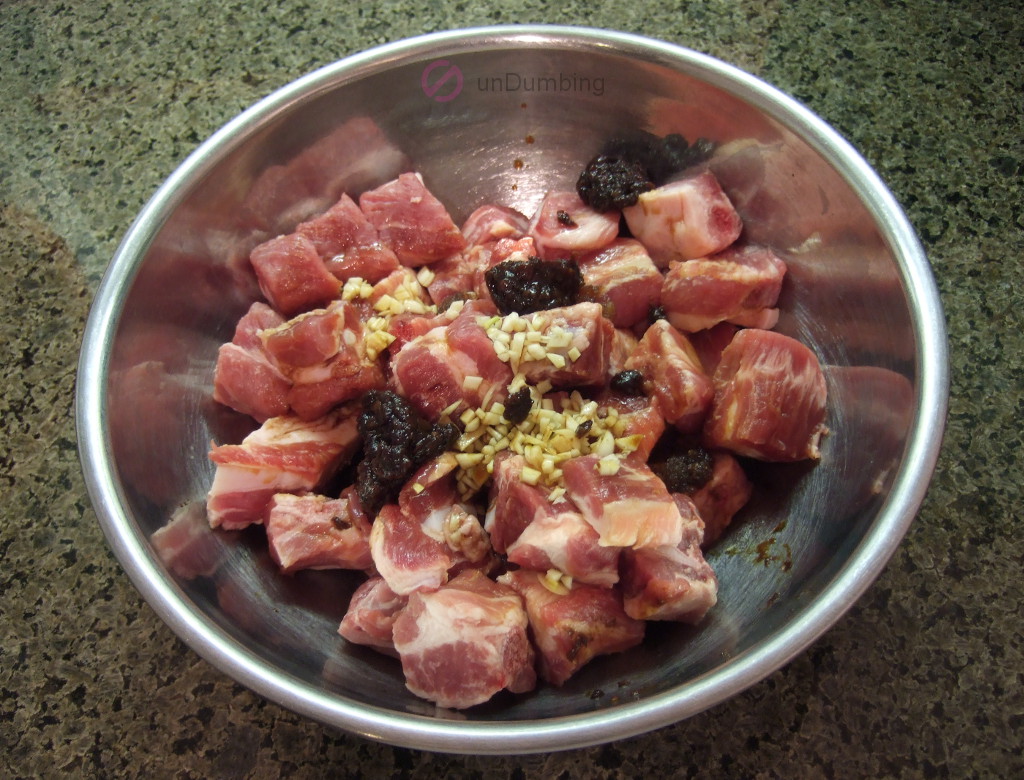
Time to Eat
After the ribs were cooked, I couldn’t wait to test them.
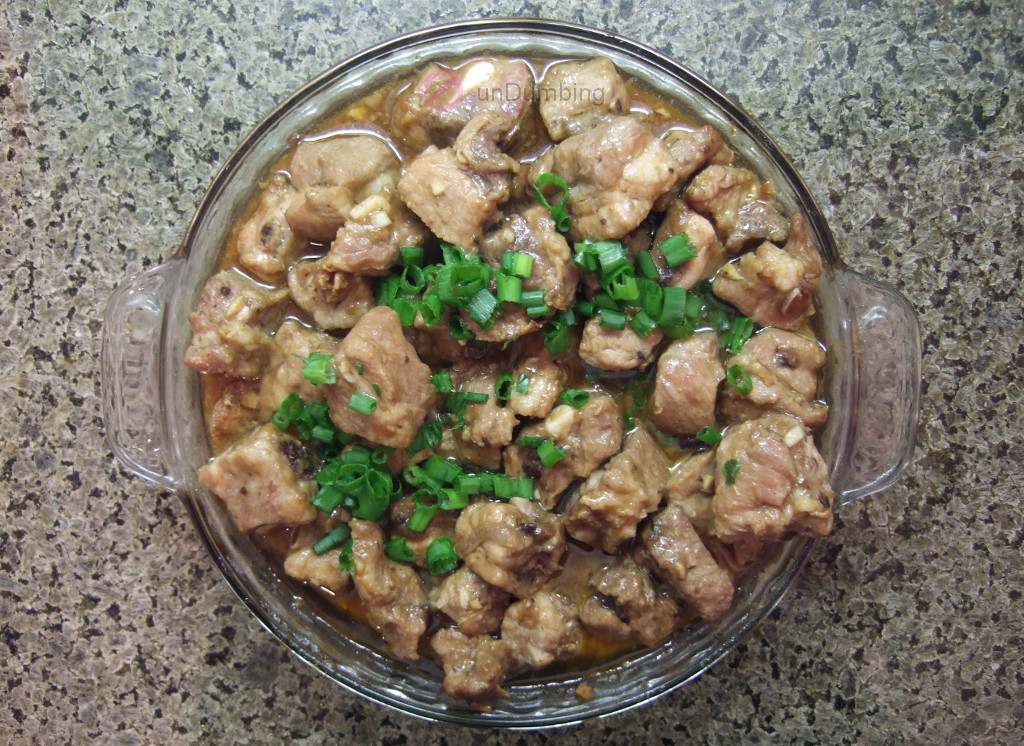
Recipe Rating
Below are the results of the recipe from the second attempt:
| # of Ingredients | Effort | $ / Serving | Try Again? |
|---|---|---|---|
| 11 * |

The spare ribs were still tasty but chewier than before. Nonetheless, I was thrilled that none of the pieces were pink.
While I didn’t have any issues with the taste of the steamed spare ribs, I can work on the texture next time by doing the following:
Continuous Improvement
- Use a little over 2 pounds of St. Louis-style spare ribs, cook them for around 20 minutes, and accept some pink tinge in the meat, so they’re not overcooked.
Through my experience with steaming spare ribs, I learned the following that I wish my previous self knew:
Lesson for Dumber Self
- Pork doesn’t need to be well-done.
What will you do now?
Next Step for You
- Try the Steamed Spare Ribs with Black Bean Sauce from Pups with Chopsticks?
- Learn more about spare ribs? (How to Trim Spare Ribs from The BBQ Buddha, a blog, is a good place to start.)
- Read another post on this site? (Go to the menu at the top of the page.)

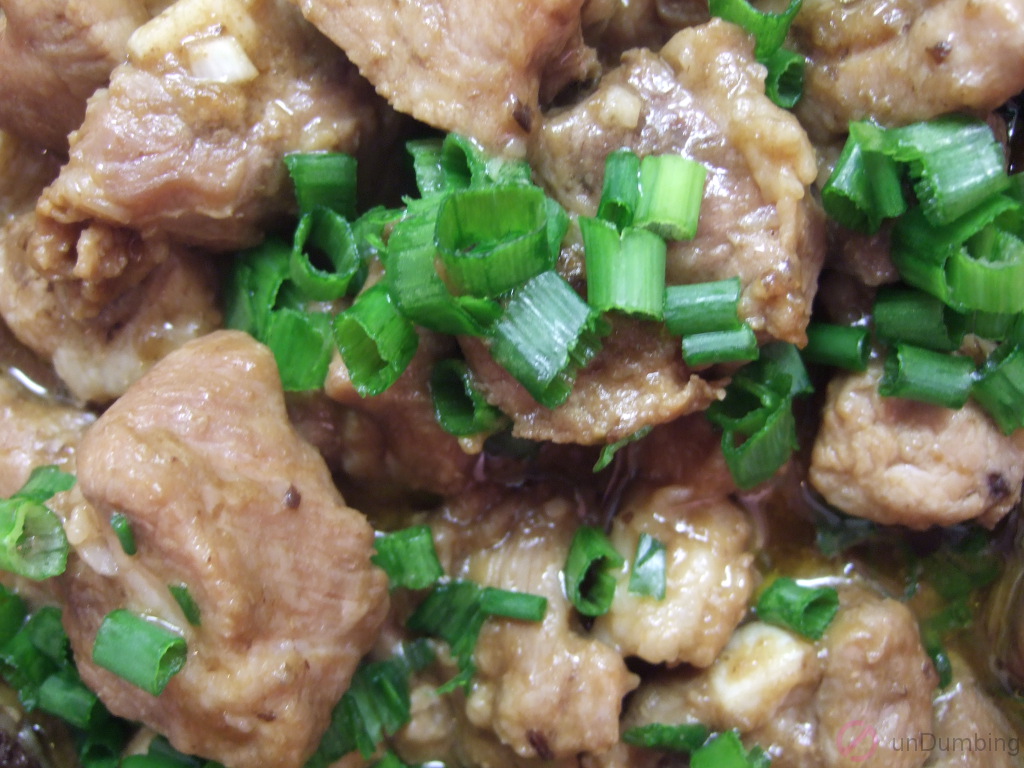
Leave a Reply